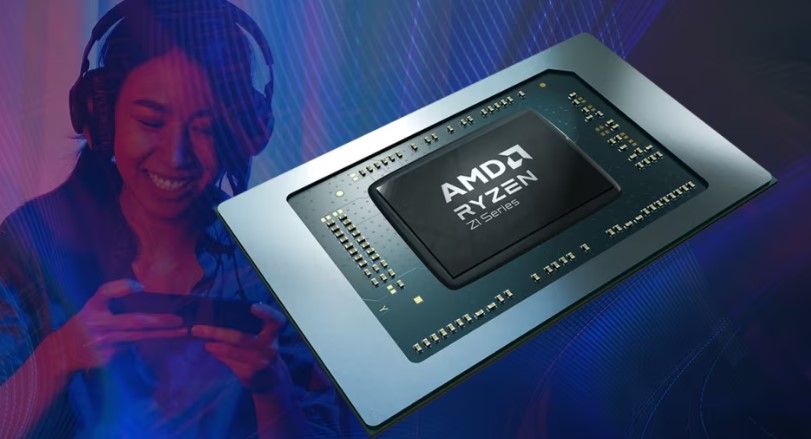The ASUS ROG Ally is the newest mainstream handheld console to vie for a market that is currently dominated by the Steam Deck for better or worse thanks to Valve's immense brand value and unique solution to handheld games.
When Does the ASUS ROG Ally Release?
While the Steam Deck has been out since February 2022, the ROG Ally is expected to officially release on the 13th of June. We did get a unit for testing and got our first impressions down on what handheld gaming looks like on a Windows-based console as opposed to a Steam Deck.
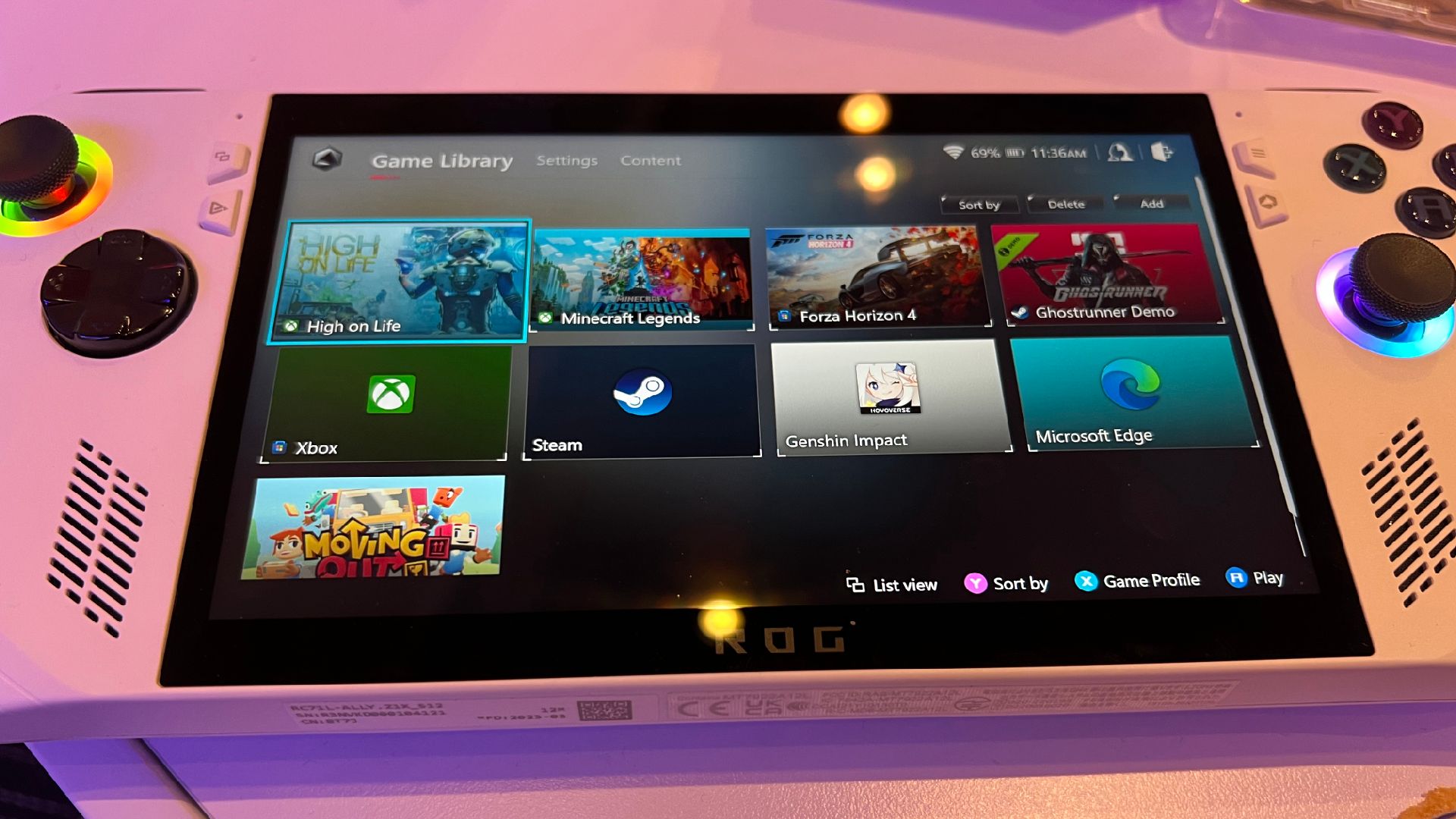
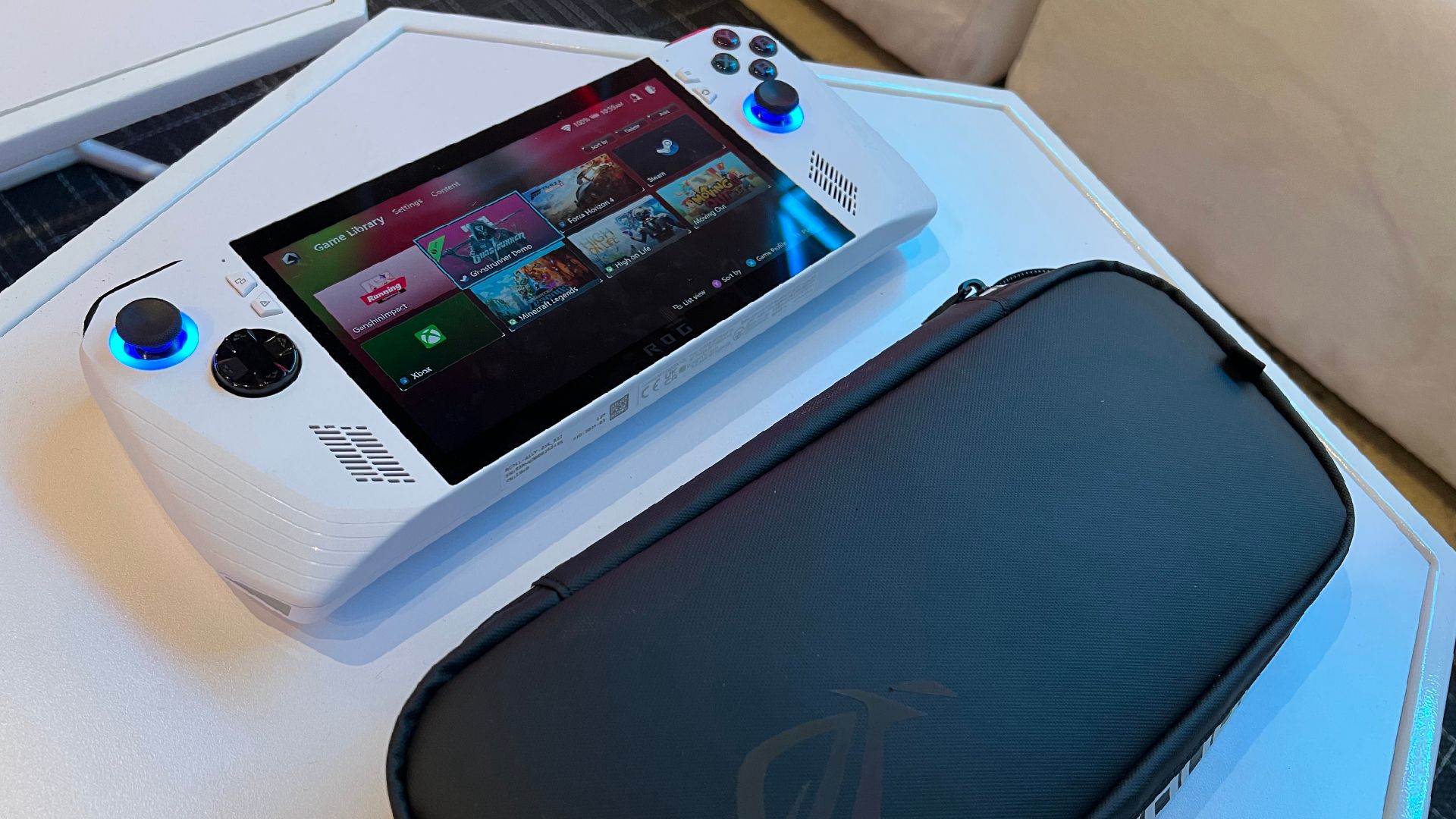
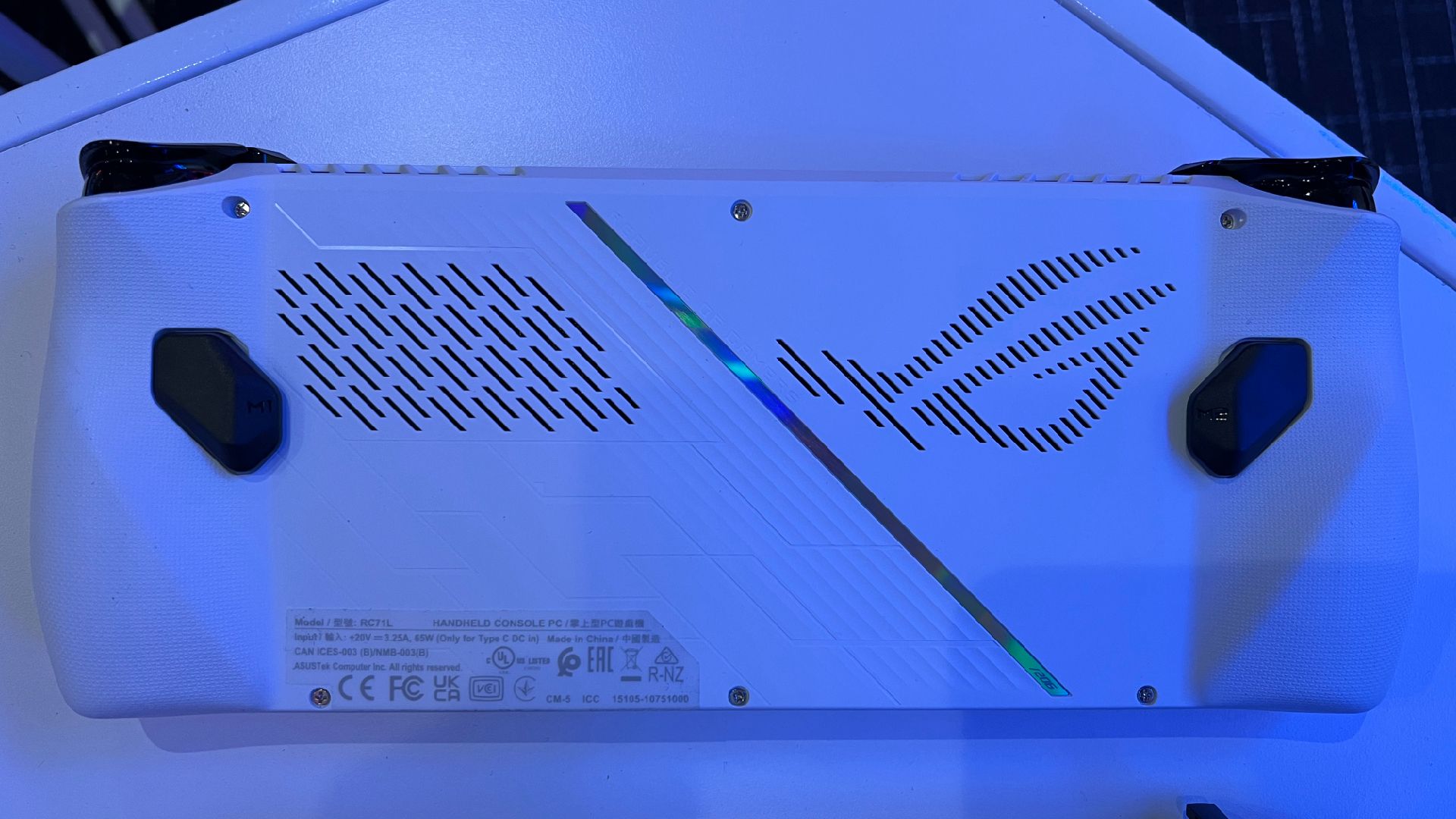
The ASUS ROG Ally in action during our hands-on preview left us impressed given its significant hardware offerings
The Steam Deck Versus The ASUS ROG Ally: Hardware Specs Head To Head
Steam Deck | ASUS ROG ALLY | |
Processor/Chipset | Custom ‘Van Gogh’ AMD Zen 2-Based APU | AMD Ryzen Z1 Extreme/ AMD Ryzen Z1 (Zen 4 Cores) |
Processor Cores | 4 | 8 (Z1 Extreme) or 6 (Z1) |
Processor Threads | 8 | 16(Z1 Extreme) or 12(Z1) |
Max CPU Clock Speed | 3.5 GHz | 5.1 GHz (Z1 Ex), 4.9 GHz (Z1) |
Graphics Architecture | AMD RDNA2 | AMD RDNA3 |
GPU Compute Units | 8 | 12 (Z1 Ex), 4(Z1) |
Max GPU Clock Speed | 1.6 GHz | 2.7 GHz (Z1 Ex), 2.5 GHz (Z1) |
Maximum APU Power | 4-15W | 9-30W (AMD Specified) |
Chipset Manufacturing Process | 7nm | 4nm |
Cooling Fans | 1 | 2 |
Memory/RAM | 16GB LPDDR5 (5500 MT/S) | 16GB LPDDR5 (6400 MT/S) |
Storage Options | 64GB (eMMC), 256GB, and 512GB with the option to upgrade | Currently available in only 512GB |
Storage Standards | PCI-E 3.0 SSD + UHS-I SD Card Support | PCI-E 4.0 SSD + UHS-II SD Card Support |
Operating System (OS) | Debian 8 Linux-based Steam OS | Windows 11 |
Screen Size | 7 Inches | 7 Inches |
Native Resolution | 1280x800 | 1920x1080 |
Refresh Rate | 60Hz | 120Hz (With VRR Support) |
Peak Brightness | 400 Nits | 500 Nits |
Display Tech | IPS Touchscreen | IPS Touch Screen |
Wireless Connectivity | Wi-Fi 5 + BT 5.0 | Wi-Fi 6E + BT 5.2 |
Wired Connectivity | Headphone Jack, USB-C with DP Support | Headphone Jack, USB-C with DP Support |
Speakers | 2 Front-Facing | 2 Front-Facing (Dolby Atmos Certified) |
Weight | 669g | 608g |
Dimensions | 298x117x49mm | 280x113x39mm |
Provided Charger | 45W | 65W |
Battery Capacity | 40WHr | 40WHr |
MSRP | $399, $529, $649 Based on capacity | $599, $699 based on processor trim |
The Internals: Diving Into What Powers Your Experience
The Chips Powering It All
There is no denying that the Steam Deck is 1-upped by the ASUS ROG Ally in all meaningful hardware benchmarks simply because of the underlying differences between the APUs on the two. With the now somewhat-aging Zen 2 cores in a quad-core offering on the Steam Deck versus a much faster octa-core Z1 Extreme powered experience on the ROG Ally with much greater leeway when it comes to power available to the SoC (up to 15W vs up to 30W on the Ally), this is hardly a fair comparison but one that the ROG Ally wins easily.
The AMD Z1 Series APUs are expected to power multiple handheld consoles in the coming days with the ASUS ROG Ally expected to be the first of many. (Source: AMD)
This is reflected thanks to both, the higher IPC (instructions per cycle) count that Zen 4 cores come with versus the older Zen 2 cores and the higher clocks the ROG Ally brings to the table with the Z1 Extreme able to push even 5.1 GHz sustained if thermally allowed to do so. The 12 RDNA 3-based graphics cores on the Ally versus the 8 RDNA 2-based cores on the Steam Deck further cement its position as the superior console when considering potential performance.
Storage & Memory Options
Both the ASUS ROG Ally & the Steam Deck ship with 16GB of LPDDR5 memory accessible by the APU. While the ASUS offering is slightly faster at 6400MT/s, the Steam Deck, despite being over a year older, also clocks in at a respectable 5500 MT/s.
In terms of internal SSD offerings, this gets more interesting as the Steam Deck comes in 3 flavors; the 64GB gets eMMC storage while the 256GB and 512GB get SSD storage that works below the PCI-E 3.0 speeds that the console is capable of with the 512GB clocking in slightly faster than the 256G unit's module. It must be noted that the console itself restricts speeds to a maximum of 2 lanes of PCI-E 3.0, meaning that the console is limited to ~2000mbps of I/O even if you find a faster storage module.
Compared to this, the ROG Ally comes with PCI-E 4.0 support out of the box and an SSD to match which caps out at approximately 5000mbps of storage speeds that dwarfs anything that you could possibly couple and get similar speeds with on a Steam Deck. While the advantages of this are debatable in most real-world scenarios where the Steam Deck does well enough on its SSD variants to not warrant a major overhaul in terms of raw potential speeds, but the option is good enough to have for those looking to compare the two.
Both consoles support microSD cards but the ROG Ally does tend to edge out the Steam Deck with UHS-II support which allows approximately 3 times the effective speed of the Steam Decks UHS-I speeds.
Power: Charging & Capacity
Both the Steam Deck & ROG Ally are powered by a 40WH Battery but the ROG Ally has a potentially more significant power drain potential thanks to a full HD display and a much more powerful processor coupled with a full-fledged version of Windows running on it. That being said, efficiency also kicks in here and allows both to perform similarly unless you engage the Ally's Turbo mode which, based on most tests runs less than an hour when charged at full capacity. The Steam Deck's bundled adapter caps out at 45W while the ROG Ally comes with a significantly faster 65W version.
Networking Options & Connectivity
Both the Steam Deck and ROG Ally are powered by USB-C connectors which feature the ability to also connect external displays, add to or function with more devices, and/or connect to Ethernet ports. On the networking end, the Steam Deck uses Wi-Fi 5 (AC) and Bluetooth 5.0 to communicate while the ROG Ally pushes much more recent tech (Wi-Fi 6E plus BT 5.2).
This is a major letdown in our opinion as Wi-Fi 6 was a mainstream standard when the Steam Deck launched and having better wireless internet in a handheld would have considerably made life easier for the multitude of users that often complain about limited download speeds and higher latency while gaming especially when most of the current networking hardware is Wi-Fi 6/6E compatible today.
Display & Audio Specifics
With a 7', 16:9 aspect ratio and a brighter 500-nit screen that has a refresh rate of 120Hz with up to a Full HD resolution along with VRR support, the Ally is arguably well-positioned to be the best handheld in the market when it comes to display quality alone for some time.
The Steam Deck also offers a 7-inch screen but runs at a lower HD resolution in a 16:10 aspect ratio with a max refresh rate of 60 Hz. While that isn't an issue on its own as we found in our own play tests, with even the Steam Deck feeling fairly sharp in the display department, there is no denying that it is dwarfed by ASUS's offerings here.
On the audio front, things are much more equal thanks to both the Steam Deck and the ROG Ally packing decent speakers even if the latter's bundled ones are Dolby Atmos certified. Both have dedicated 3.5mm audio jacks in tow and Bluetooth if you wish to connect to a wireless headset.
The ROG Ally: A Pricey Friend?
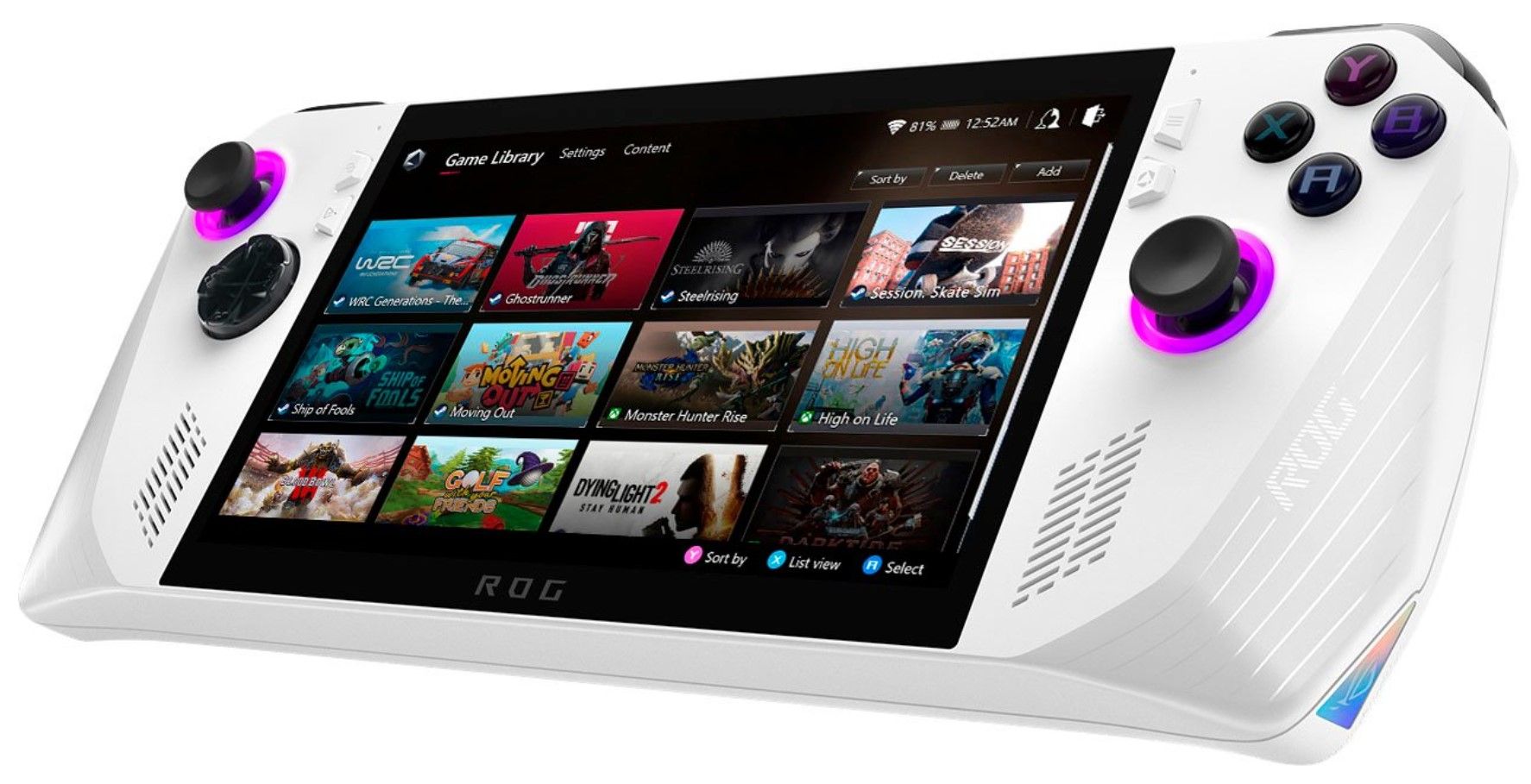
ASUS ROG Ally
The Asus ROG Ally is the ultimate handheld system for PC gamers. Relying on the new AMD Ryzen Z1 series of processors, the ROG Ally can handle any game thrown at it. The 7-inch 1080p Full HD display with FreeSync Premium on the system provides gamers with a crystal clear and smooth gaming experience.
The advantage of the ROG Ally is that it can run most Windows-compatible games and is compatible with Xbox Game Pass titles. The ROG Ally also features an ergonomic design that makes it easy to grip while all buttons are within easy reach.
- Dimensions
- 2 Speakers with Dolby Atmos
- Playing Time
- 1.3-4+ hours
- Brand
- Asus
- Weight
- 1.34 lbs
- Chipset
- AMD Ryzen Z1 / Z1 Extreme
- RAM
- 16GB LPDDR5
- Storage
- 512GB NVMe SSD (PCIe 4)
- Wireless Connectivity
- Wi-Fi, Bluetooth
- Headset Compatibility
- Wired, Wireless
- Display
- 7-inch LED IPS
- Output resolution
- 1080p
- Graphics
- 2.8 GHz AMD RDNA 3
- Ports
- USB-C, Custom Asus PCIe Port
- Powered by a state-of-the-art Z1 Extreme APU for handheld consoles
- Has an excellent, beautiful display that looks sharp and bright in everyday use
- Runs a full version of Windows, making it both an excellent handheld console and a laptop replacement when used with a supporting dock
- At $700 for the currently available version for preorder, this is much more expensive than the competition's cheapest $400 offering
- Runs out of power extremely fast in turbo mode
The ASUS ROG Ally is an excellent handheld console that is looking to replace the Steam Deck at the high end for console users needing to game on the go. It is unapologetically a complete gaming PC and packs some of the best hardware money can buy for a handheld unit. With an excellent screen, plenty of connectivity wirelessly, and a battery life that matches the competition, the Ally is actually lighter than the Steam deck by about 10% making it a more portable choice, even if slightly so. It also offers slightly smaller and thinner dimensions to boot.
While there is a 256G Z1-powered version planned down the line, ASUS makes the ROG Ally lead with its guns blazing and a price tag to match though any comparison to the Steam Deck's $650 512G version makes it look appealing - that is until you consider that you can easily configure the Steam Deck's based model with a terabyte of storage and still have $200 spare with a bit of DIY incentive.
At the same time, you get much more in terms of choices with the ASUS ROG Ally thanks to its adoption of Windows. Unlike multiple games that need to be 'certified' by Steam to be working on Steam Deck, as a full-fledged Windows PC, it will run everything perfectly if it is able to match it at a specifications level. This does make it considerably more flexible compared to the Deck and while you can install 3rd party launchers such as Epic Launcher for example with small workarounds. If you are looking for tweaks or mods for games that often rely on them, this might be a superior solution given that it is running windows out of the box.
The Steam Deck: Acceptable Performance In Many Capacities
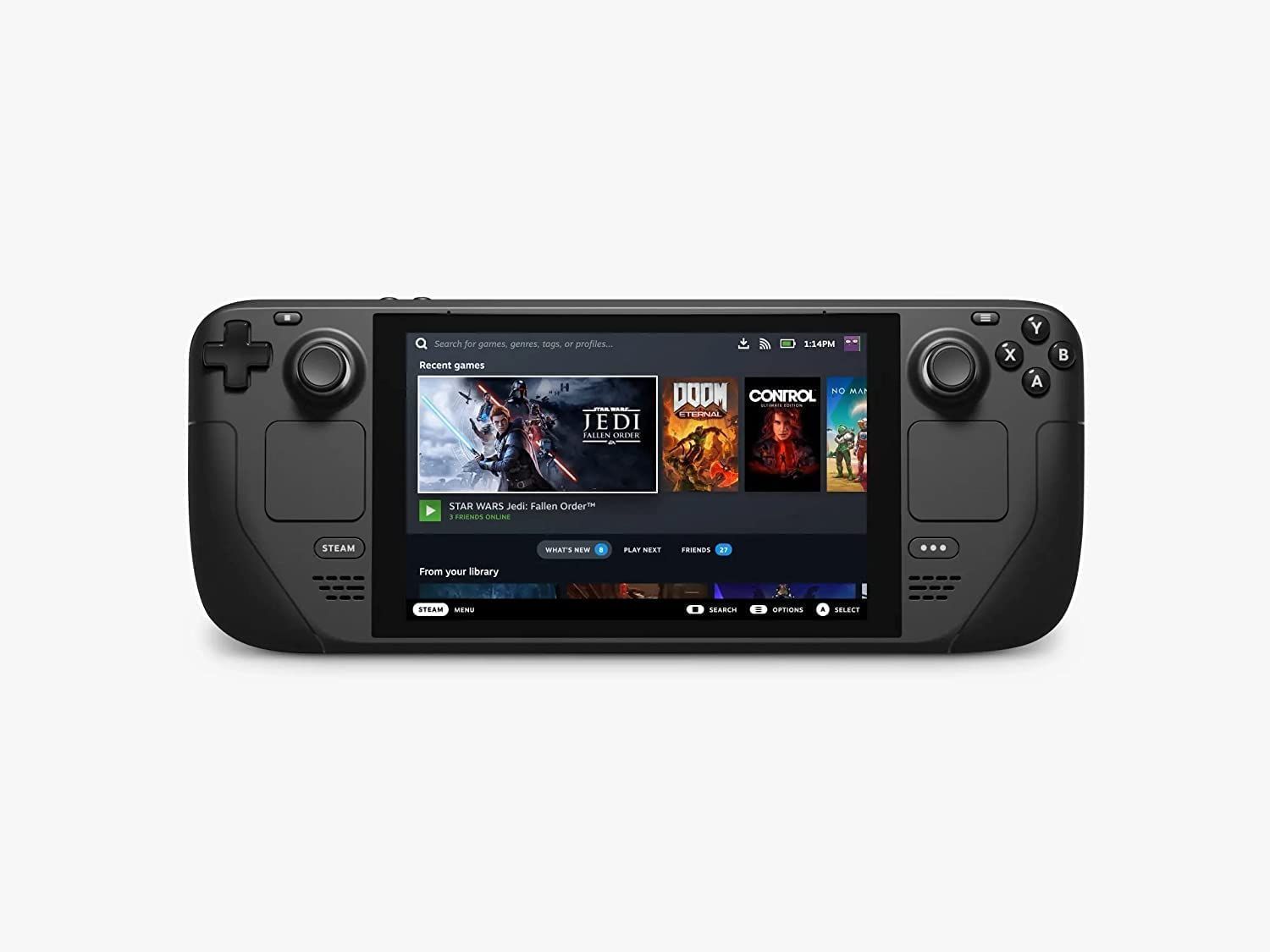
Steam Deck
Valve's long-awaited portable console is here, and it's taking the handheld gaming market by storm. Valve partnered with AMD to create Steam Deck's custom APU, optimized for handheld gaming. It is a Zen 2 + RDNA 2 powerhouse, delivering more than enough performance to run the latest AAA games in a very efficient power envelope.
- 4K Capabilities
- Yes
- Screen
- 7" diagonal 1280 x 800px (16:10 aspect ratio) 60Hz
- Storage
- 64 GB - 512 GB
- CPU
- AMD APU Zen 2 4c/8t, 2.4-3.5GHz
- Battery
- 40Whr battery. 2 - 8 hours of gameplay
- Connectivity
- Bluetooth 5.0 and Dual-band Wi-Fi radio, 2.4GHz and 5GHz
- Ports
- 1x USB-C with DisplayPort 1.4 Alt-mode support; up to 8K @60Hz or 4K @120Hz, 1x USB 3.2 ,1x Micro SD slot, 1x 3.5 audio jack
- Dimensions
- 298mm x 117mm x 49mm
- Weight
- Approx. 669 grams
- Audio
- Stereo with embedded DSP for an immersive listening experience and Dual Microphone Array
- Comes in multiple capacity sizes based on your needs
- Pricing starts at as low as $400 and goes up to $650
- All units have upgradability potential and are uniform otherwise apart from storage
- Offers an acceptable gaming performance at 720P levels that outdoes a Nintendo Switch
- Comes with excellent controls including trackpads that were considered exceptionally good on the steam controller earlier
- Hardware specifications are somewhat dated in 2023
- Does not run a complete build of an OS, most applications must be 'emulated' to be run on the platform
The Steam Deck by Valve is a handheld that got people thinking about handheld PC gaming thanks to recent advances in power draw and portability on laptops and low-powered PCs and in a way is the de facto precursor to the ROG Ally. It runs a custom version of Debian Linux and has you covered when it comes to the basics no matter which SKU you go for of the 3 offerings. It is also slightly heavier and bulkier than its more recent (soon-to-be launched) alternative from ASUS and impressively, holds its own for a console that costs in some cases, a fraction of its 2023-centric competition.
Depending on how you see it, the tighter integration with Steam's custom SteamOS can be useful when you look at it as a more bloatware-free approach to an OS, and Valve is quite frank about its limitations. The ASUS ROG Ally is obviously a more versatile console thanks to its OS choice, but that might not be the best choice for gamers looking for tighter integration with their Steam libraries, no bloatware, and relatively limited use for a 'smarter' gaming console.
The Steam Deck's biggest assets are both its brand value and the effort that Valve has put in to ensure games work well with it thanks to its thorough testing regime. This, coupled with a significantly cheaper entry-level model at $400 means that the ROG Ally is merely a competitor turning up the heat on Valve's brainchild, one that is by no means something you can write off currently.
FAQ:
Q: When does the ASUS ROG Ally Release?
A: The ASUS ROG Ally Releases on the 13th of June 2023 at a cost of $700 for the 512G Z1 Extreme-powered model. A Z1-based $600 model with the same capacity is expected to launch at a later date despite being unveiled alongside the Ally by the ASUS team.
Q: Is the ASUS ROG Ally Worth It?
A: If you are looking for the best- spec'd handheld console on the market that comes packed with plenty of current-gen technology, the ROG Ally is worth the spend even if it clocks in as much as $300 more than the base mode of its competition for the about-to-release handheld console. If you are looking for the bare minimum to play PC games in handheld mode or need something with Valve's trackpad solution to gaming on the go or something similar, the Steam Deck still is a no brainer for most consumers given its much more budget-friendly pricing.

